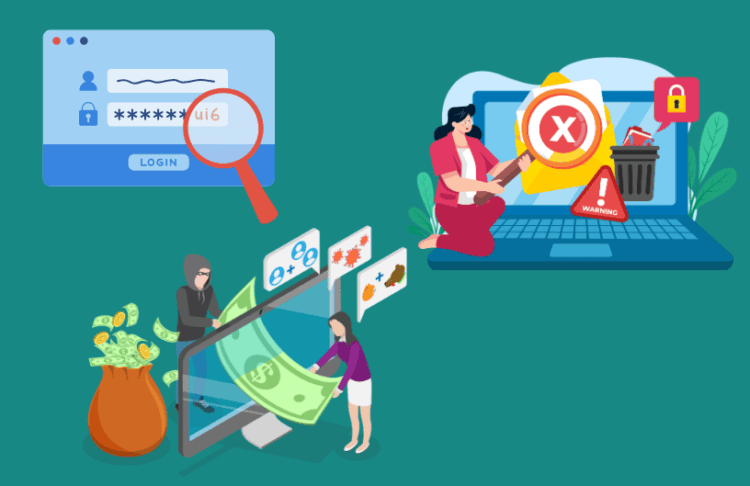Fraudsters rely on deceptive tactics to trick individuals into disclosing sensitive information. Here’s how these scams typically operate:
Impersonating Trusted Organisations
Scammers often pose as reputable entities like banks, government agencies, or popular companies to appear legitimate. They mimic official branding, such as logos, language, and tone, in emails, texts, or calls. This imitation is designed to build trust and make you believe the communication is authentic.
Creating Urgency and Fear
One of their primary strategies is to instil panic or a sense of urgency. Messages might warn of account suspensions, unauthorised transactions, or unpaid debts, pressuring you to act quickly. This emotional manipulation is intended to cloud your judgment and compel you to respond without verifying the request.
Malicious Links and Attachments
Phishing emails and smishing texts frequently include links directing you to fake websites that resemble legitimate ones. These sites are crafted to harvest your personal or financial information. Similarly, attachments in phishing emails may contain malware designed to compromise your device and steal sensitive data.
Exploiting Your Data
Once fraudsters obtain your information—such as login credentials, banking details, or personal identification—they can commit identity theft, perform unauthorised transactions, or access other linked accounts. Many victims only discover the breach after significant harm has been done.
How to Protect Yourself
- Stay Alert: Avoid clicking links or opening attachments from unknown or unverified sources. Hover over links to check if the URL matches the sender’s organisation.
- Verify Requests: Always contact organisations directly through their official channels to confirm requests.
- Keep Personal Info Private: Never share sensitive details like passwords or financial information via email, text, or phone.
- Spot the Warning Signs: Watch for misspellings, generic greetings, or requests demanding urgent action—common red flags.
- Strengthen Your Security: Regularly update your software and use reputable security tools to guard against threats.
- Report Suspicious Activity: Immediately notify your bank or the relevant organisation if you suspect a scam.
Staying cautious and informed is your best defence against phishing, smishing, and vishing attempts. If you are ever in doubt, do not engage and verify the request with the organisation through their official channels. Always think twice before sharing sensitive information.







